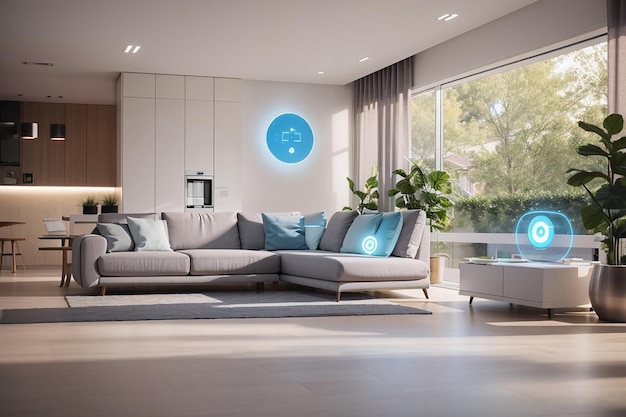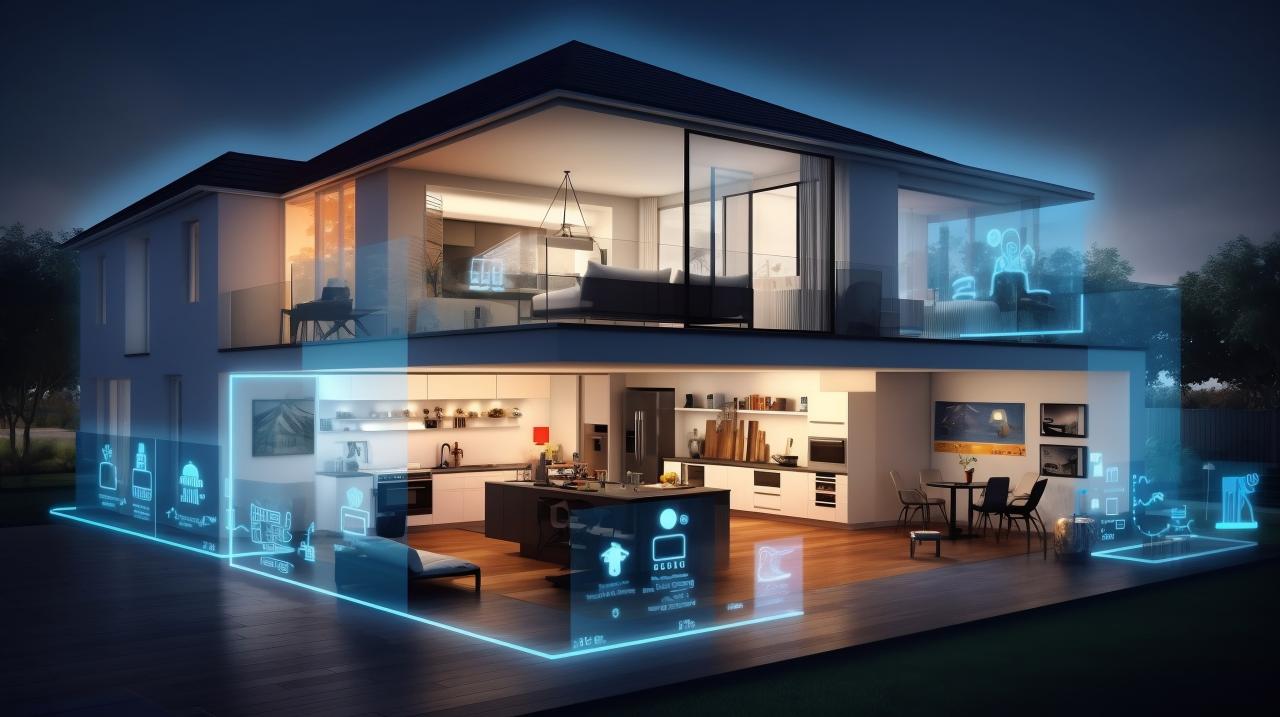In the rapidly evolving digital era, the concept of ambient intelligence (AmI) is redefining how humans interact with technology in physical environments. No longer are devices simply tools that respond to commands. Today, systems are becoming intelligent, responsive, and almost invisible in their functionality—constantly adapting to users’ needs without direct input. This paradigm shift is transforming homes, workplaces, healthcare facilities, and cities into smart environments capable of enhancing efficiency, safety, comfort, and personalization.
This comprehensive guide explores what ambient intelligence truly means, its components, benefits, real-world applications, and the crucial role it plays in shaping the smart spaces of the future.
Understanding Ambient Intelligence (AmI)
Ambient Intelligence refers to a digital environment where embedded systems and intelligent devices proactively support people’s daily activities. These systems work seamlessly in the background, collecting data, learning from behavior patterns, and adapting their operations to provide context-aware assistance.
Key Characteristics of Ambient Intelligence:
A. Context Awareness – Systems detect environmental conditions and user activities to tailor responses accordingly.
B. Embeddedness – Technology is invisibly integrated into the physical environment.
C. Personalization – The system recognizes individuals and customizes settings or services.
D. Adaptability – Devices and networks learn from user behavior and evolve over time.
E. Anticipatory Behavior – Systems can predict needs before users even express them.
In simple terms, AmI enables environments to become intuitive, intelligent, and responsive—a step beyond conventional automation.
The Core Technologies Behind Ambient Intelligence
Ambient intelligence is not a single technology, but rather a combination of several advanced technologies working in unison:
A. Internet of Things (IoT)
IoT provides the foundation for AmI by interconnecting devices, sensors, and systems that gather and transmit data.
B. Artificial Intelligence (AI) and Machine Learning (ML)
AI and ML analyze the data collected by IoT devices to understand user habits, recognize patterns, and make predictions.
C. Ubiquitous Computing
This concept refers to computing embedded everywhere—across appliances, clothing, furniture, and infrastructure—making interaction with technology seamless and natural.
D. Sensor Networks
Environmental and biometric sensors detect light, temperature, motion, noise, and physiological metrics, enabling real-time contextual awareness.
E. Natural User Interfaces (NUIs)
Voice commands, gestures, facial expressions, and touch inputs are used to communicate with ambient systems, creating a more human-like interaction.
F. Edge and Cloud Computing
Edge computing allows data processing closer to the source, reducing latency, while cloud infrastructure provides large-scale storage and processing capabilities.
Key Components of a Smart Ambient Environment

For ambient intelligence to thrive within smart spaces, several elements must be effectively integrated:
A. Smart Devices and Appliances
These include thermostats, lighting systems, voice assistants, smart TVs, and home appliances capable of responding to user input and automation triggers.
B. Communication Networks
A robust network infrastructure—typically Wi-Fi, Bluetooth, Zigbee, or 5G—is essential for reliable communication among devices.
C. Context-Aware Software
Software platforms that interpret sensor data and apply rules or algorithms to respond intelligently.
D. Control Hubs and Dashboards
Centralized or decentralized control systems that allow users to configure preferences or monitor activity.
E. Data Privacy and Security Systems
As data becomes more personal, embedded security protocols such as encryption, biometric authentication, and blockchain are essential.
Real-World Applications of Ambient Intelligence
Ambient intelligence is no longer theoretical—it’s being applied across industries to enhance daily life and operational efficiency.
A. Smart Homes
-
Adaptive lighting that dims when you relax or brightens when reading
-
Smart thermostats adjusting based on outdoor temperature and occupancy
-
Voice-controlled entertainment and appliances
-
Intrusion detection and safety alerts triggered by unusual activity
B. Healthcare and Assisted Living
-
Wearables tracking patient vitals and notifying caregivers in emergencies
-
Fall detection systems for elderly individuals
-
Medication reminders and health monitoring integrated into home environments
-
Smart hospital rooms that adjust temperature, lighting, and sound based on patient condition
C. Workspaces and Offices
-
Occupancy-based lighting and air conditioning systems
-
Smart scheduling assistants that manage meetings and rooms
-
Environmental monitoring to improve air quality and comfort
-
Touchless access systems and energy-efficient facilities
D. Smart Cities and Urban Planning
-
Intelligent traffic management that adjusts signals based on congestion
-
Waste management systems using sensors for optimized collection routes
-
Smart street lighting that dims when no movement is detected
-
Public transportation systems providing real-time updates and capacity alerts
E. Retail and Customer Experience
-
Personalized in-store experiences using beacons and facial recognition
-
Smart fitting rooms recommending items based on customer preferences
-
Adaptive digital signage reacting to customer demographics and moods
-
Queue management and contactless checkout using ambient data
Advantages of Implementing Ambient Intelligence in Smart Spaces

The integration of ambient intelligence delivers immense value—both for individual users and organizations.
A. Enhanced Convenience and Comfort
Users experience smoother, more intuitive interactions with their surroundings. Tasks like adjusting lighting, temperature, or playing music become automated and context-aware.
B. Improved Safety and Security
With real-time surveillance, biometric authentication, and anomaly detection, ambient systems provide a safer living and working environment.
C. Energy Efficiency and Cost Savings
Automated systems that monitor usage patterns and environmental data reduce waste and optimize resource consumption.
D. Personalized User Experience
Every user’s preferences can be learned and remembered, enabling more satisfying interactions that adapt to moods, schedules, or needs.
E. Increased Productivity
In workplaces, ambient intelligence removes friction in routine tasks, streamlines collaboration, and improves environmental conditions.
Challenges and Risks of Ambient Intelligence
Despite its benefits, the implementation of ambient intelligence faces several hurdles that must be addressed for safe and effective deployment.
A. Data Privacy and Ethics
With continuous data collection, concerns arise about surveillance, consent, and misuse of personal data. Regulatory compliance (e.g., GDPR, HIPAA) must be prioritized.
B. Security Threats
Each connected device adds a point of vulnerability. Cybersecurity threats such as hacking, data theft, and system manipulation are critical concerns.
C. High Implementation Costs
Initial setup involving sensors, devices, AI systems, and networking infrastructure can be expensive for both homes and businesses.
D. Interoperability Issues
Different devices may use varying protocols or standards, making integration complex without standardized frameworks.
E. Technology Dependence
Over-reliance on automation can reduce user control and make systems susceptible to failure during outages or malfunctions.
Steps to Building an Ambient Intelligent Space
To successfully integrate ambient intelligence, careful planning and execution are essential. Here’s a step-by-step approach:
A. Define Goals and Use Cases
Identify what you want your smart space to achieve—comfort, security, energy savings, healthcare monitoring, or operational efficiency.
B. Conduct a Technology Audit
Assess the current infrastructure, including internet speed, device compatibility, and physical layout, to plan appropriate system integration.
C. Select Compatible Devices
Choose smart devices that support open standards and can communicate with each other or a central hub.
D. Implement Context-Aware Systems
Install sensors and software platforms capable of interpreting environmental and behavioral data.
E. Train AI Models
Use historical data and continuous learning to enable the system to make accurate, adaptive decisions.
F. Establish Privacy and Security Measures
Encrypt communications, implement user authentication, and define data-sharing protocols to protect personal information.
G. Monitor and Optimize
Use dashboards or mobile apps to oversee performance, make adjustments, and continuously enhance user experience.
The Future of Ambient Intelligence in Smart Spaces
The future of ambient intelligence is bright, promising even deeper integration, automation, and personalization in everyday life. Several trends are emerging that will define the next phase:
A. AI-Powered Emotion Recognition
Systems will soon be able to detect emotional states via facial expressions, tone of voice, and body language—responding with empathy.
B. Fully Autonomous Environments
Homes and buildings will eventually self-regulate entirely without human input—anticipating every need and automating every function.
C. Digital Twins for Smart Spaces
Using real-time data to create digital replicas of environments, allowing for simulations, predictions, and remote control.
D. Privacy-Preserving Ambient AI
Technologies like federated learning and edge AI will allow data processing to happen locally, protecting privacy while enabling intelligence.
E. Universal Interoperability Standards
Open-source platforms and universal protocols will make cross-device communication and system integration seamless and efficient.
Conclusion: Ambient Intelligence Is Reshaping Modern Life
Ambient intelligence is far more than a futuristic concept—it’s a practical innovation reshaping how we live, work, and interact with the environments around us. From smart homes to intelligent cities, AmI is creating spaces that think, learn, and adapt, bringing new levels of personalization, safety, and efficiency.
Organizations and individuals that embrace this technological shift will enjoy better living conditions, competitive advantages, and the ability to thrive in a digitally connected world. However, to unlock its full potential, thoughtful design, ethical frameworks, and robust security must guide every step of the journey.







